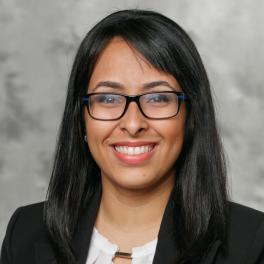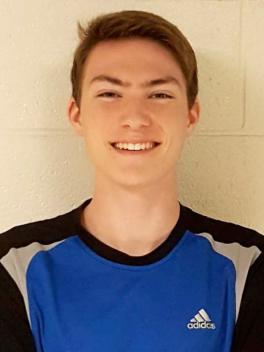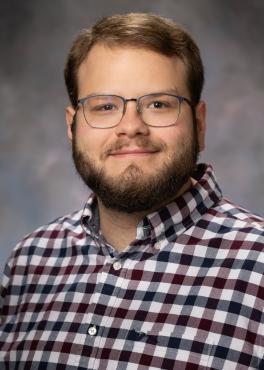Students from all over the world join the Molecular Genetics program at the Ohio State University. Read on to learn more about their research and get their advice for first year graduate students...
Priscila Rodriguez Garcia

Priscila joined the program in 2016 with BS degree in Biology from University of Puerto Rico at Mayaguez. She is working towards her PhD in David Mackey’s lab. Priscila was supported in her first year by a competitive Dean’s Enrichment Fellowship and as of 2018 she is supported by the training program in Cellular, Molecular and Biochemical Sciences.
What sparked your interest in science?
In school I noticed that science teachers often said "we don't know how this works yet". This made me realize that there is an immense world of unknowns that I could explain through science. So, teachers admitting that there are things science has not yet explained is what sparked my interest in science.
What attracted you to the Molecular Genetics program?
I had friends in graduate school at OSU who always spoke about how welcome they felt and how many resources the university has. This led me to look into the OSU science departments, which is when I found the Department of Molecular Genetics. I looked into the professor's research and I found a wide range of interests: RNA mechanisms, development, plant biology, cancer genetics, etc. This wide range of research topics meant that I would be exposed to a lot of different scientific concepts. So I decided to apply. Then I came for interview and confirmed what my friends had told me about the university; I felt welcomed.
Tell us a bit about your research.
I work with plant-pathogen interactions trying to understand the molecular mechanisms of plant immunity. In my lab we use maize and Arabidopsis as plant models to study their response to bacterial pathogens. Currently I am using the CRISPR/Cas9 system to produce Arabidopsis plants that have mutations in genes involved in plant immunity. I am also working with a maize gene that produces a disease lesion mimic phenotype, which is when the plant exhibits symptoms of pathogen infection in the absence of pathogen. All of this with the goal of deciphering the molecular mechanism of plant-pathogen interactions.
What dreams or goals do you have for you future?
I adjust my goals from time to time, but my ultimate dream has always been to go back to Puerto Rico and give back to the community. I want to make people curious about science.
When I'm not in the lab, you might find me....
Playing video games and watching horror movies. I also enjoy going to the park with my three-legged dog, Gonzalo.
What advice would you give to new first year students entering the program?
It may seem like the amount of work is overwhelming and you don't have time for activities outside grad school, but it's not true. Schedule time for everything during the week. For example, set 1.5 hours of every day for reading papers, give yourself 1 hour to have lunch and relax, factor in the time it takes you to move from one place to another. You will find it easier to follow a schedule than to think every day about how to organize your time, which can lead to something called decision fatigue.
Jackson Hastings
Jackson joined the program in 2020 and is pursuing his PhD in the lab of Anita Hopper.

What sparked your interest in science?
I remember being absolutely starstruck (both as a kid and even now) that every living thing from us, to the grass we walk on, the creatures that we don’t even know exist living miles below the surface of the ocean, and everything in between – all share the same fundamental biomolecules that constitute their being. The next thing I remember is wanting to learn and discover absolutely everything I could about those molecules and how they worked. Genetics specifically is fascinating to me because genomes are like the programming codes that make life work – and if that isn’t the coolest thing ever, I don’t know what is.
What attracted you to the Molecular Genetics program?
The amount of resources at the OSU MolGen program compared to other genetics facilities around the country was frankly astounding. The most important aspect of that is other minds with which to collaborate. It’s incredibly rare to find this many people who are interested in molecular genetics clustered in the same area, and I’m honored to be working with them.
Tell us a bit about your research.
In our study system, budding yeast, there are 3 known exporters (Los1, Mex67-Mtr2, and Crm1) that are responsible for getting tRNAs outside of the nucleus and into the cytoplasm, where they do their job in translation. In the case of Mex67-Mtr2 and Crm1, we know that they need the help of some other protein(s) to bind tRNA, but we don’t know what those proteins are. I’m trying to identify them using co-IP and mass spectrometry.
What dreams or goals do you have for you future?
As long as I’m in the lab doing molecular genetics research, I am happy! I don’t have any specific big plans for now.
When I'm not in the lab, you might find me....
At home playing piano, solving a puzzle, or playing games with friends!
What advice would you give to new first year students entering the program?
Don’t be afraid to ask questions. There’s a lot you won’t know, but no one expects you to know everything right out of the gate. Find the people around you who are most suited to guide you and you will become more independent over time.
Valentina Posada
Valentina joined the program in 2020 and is pursuing her PhD in the lab of Christin Burd.

What sparked your interest in science?
I was always really curious growing up and have always been fascinated by the questions in the world we have yet to answer.
What attracted you to the Molecular Genetics program?
The research! There were a lot of faculty doing interesting work.
Tell us a bit about your research.
In my work I am to determine how UV radiation and oncogenic signaling promote melanoma development in benign nevi.
When I'm not in the lab, you might find me....
When I am not in lab, you can find me shopping or enjoying a cocktail with friends!
What advice would you give to new first year students entering the program?
Try to organize your time as best as possible! This will help make the transition into grad school a lot easier. Additionally, don’t be afraid to reach out to people in the department! Everyone is here to help you succeed!
Benjamin Gilbert
Ben joined the program in 2021 and is pursuing his PhD in the lab of Vidu Garg.

What sparked your interest in science?
I don’t remember a time when I wasn’t interested in the sciences.
What attracted you to the Molecular Genetics program?
I was looking for a program in-state that was not too big so I could have all the benefits of a big university with the community of a smaller one.
Tell us a bit about your research.
At the moment, I am studying congenital heart disease and molecular genetic mechanisms of cardiac outflow tract development.
What dreams or goals do you have for you future?
I think I would want to work in the private sector or do work for the government. I want to use my scientific knowledge towards benefiting humanity.
When I'm not in the lab, you might find me....
At a music venue going to indie/alternative rock concerts.
What advice would you give to new first year students entering the program?
The more organized and disciplined you are early in your academic career, the easier your progress will come.
